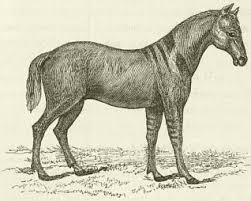One thing a Regency man (or woman) never took for granted was their horse.
So its natural that the horse spawned a whole new field of study in England.
According to the Royal Veterinary College history, the famous Georgian racehorse Eclipse was responsible for the desire to learn about the success of the horse and his cause of death. Without a veterinary college or a designated expert, the Crown called on Frenchman Charles Benoit Vial de St. Bel to perform an autopsy. Veterinary medicine had already been established on the continent some 20 years before, but evidently had had little interest in the UK until the famous horse drew his last breath.
As it happens, Vial de St. Bel was in England stomping for support to start a veterinary college in affiliation with the Odiham Agricultural Society.
The first four students attended The Royal Veterinary College in 1792. With the patronage of King George, they eventually received their Charter of Incorporation by Queen Victoria in 1875.
During the Regency years, the initial college focus as an infirmary and working stables started to evolve into a more scientific approach into animal medicine.
No doubt influenced by field medicine during the Napoleanic Wars and further spurred by the insatiable love of the Regency men and women for their horses, the College would go on to assist with epidemics like cattle plague.
Before veterinary medicine was officially established, the responsibility for animal care was laid at the fit of skilled tradesmen and farmers to mete out cures. Farriers, the equine shoemaker, were often called to also diagnose and attend illnesses in horses.
Like the midwife, farriers were often born into the trade and undoubtedly maintained a wealth of knowledge through practice and oral tradition.
The institutionalization of animal medicine perhaps foresaw the decline of dependence on the horse for transit which would have had a ripple economic effect on many skilled tradesworkers and merchants dependent on the horse industry.
The shift, too, from gentry to the labor force during industrilization no doubt made new innovations in medicine and sciences possible.










